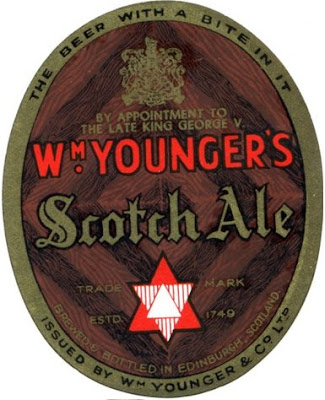This time we're looking at the grists and mashing schemes for the different types of beers.
Let's kick off with Mild Ale.
"A good useful mild ale might be produced
from 10 per cent, to 15 per cent of prepared maize or rice, 18 per cent,
to 20 per cent of glucose or invert sugar, 20 per cent to 25 per cent
of foreign malt, and about 55 per cent of highly-cured English malt with
the acrospire well grown up so that the malt may be correctly modified.
The mash-tun materials should be mashed for a primary initial heat of
148° with two barrels of liquor per quarter of malt; then, after twenty
minutes stand, an underlet should be employed of one-quarter barrel per
quarter of malt at a suitable temperature to raise the mash heat up to
151º to 152º F.; total stand, two hours."
"A Treatise of Practical Brewing and Malting" by Frank Thatcher, The Country Brewers' Gazette, 1905, page 295.
That grist breakdown looks about right to me. Flaked maize, invert sugar and base malt. That about sums up Mild grists.
The mashing scheme looks very familiar to me. A two-step mash, using an underlet to raise the temperature after half an hour or so. With relatively low mashing temperatures.Next is Pale Ale:
"For the production of a pale
ale to be kept at least one month,the ingredients should be:—10 per cent
to 15 per cent of prepared maize or rice, 10 per cent, to 15 per cent,
of invert sugar, 10 per cent, to 15 per cent, of dextrin-maltose, 20 per
cent, to 25 per cent of foreign malt, and about 50 per cent, of
well-cured English malt well germinated and modified. Materials of this
description in the mash-tun might be mashed with two-and-a-quarter
barrels of liquor per quarter of malt for a primary initial heat of 153°
to 154° F. After twenty minutes stand, one-quarter barrel per quarter
of malt should be used as an underlet at a correct temperature to raise
the mash heat to 155°F.; total stand, two hours."
"A Treatise of Practical Brewing and Malting" by Frank Thatcher, The Country Brewers' Gazette, 1905, page 295.
Note that not only are there different sugars - dextrin-maltose as well as invert - there's more of it. A maximum of 30% compared with 20% for Mild.
The mash is two step, just like with Mild, except the temperatures are somewhat higher.
"For stouts or porter, a
large percentage of caramelised matter is necessary, such as crystal
and black malts, etc., and should be apportioned as follows:—7 per cent,
to 10 per cent, black malt, 15 per cent, to 20 per cent, crystal malt, 5
per cent, to 10 per cent caramel, 20 per cent, to 30 per cent. VOco “
S” sugar, and about 40 per cent, high-dried English malt. It is
desirable, on account of the caramelised matter used, to obtain a fairly
low primary initial heat, e.g., 145° F., with two-and-a-quarter barrels
of liquor per quarter of malt; then stand thirty minutes, and subsequently, by an overflow of one-quarter
barrel of liquor per quarter of malt, raise the temperature of the mash
up to 153° or 154° F."
"A Treatise of Practical Brewing and Malting" by Frank Thatcher, The Country Brewers' Gazette, 1905, pages 295 - 296.
Don't ask. I've no idea what VOco “ S” sugar was. And it isn't an OCR error. No adjunct recommended here. Unlike for Mild and Pale Ale.
In this case, the initial mash temperature is low, but after the underlet relatively high.


























































































